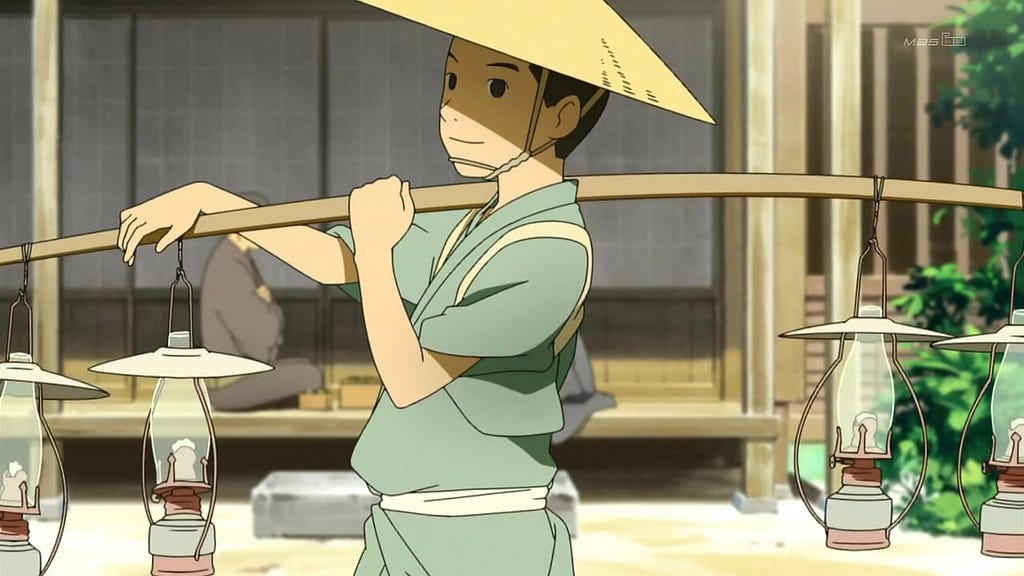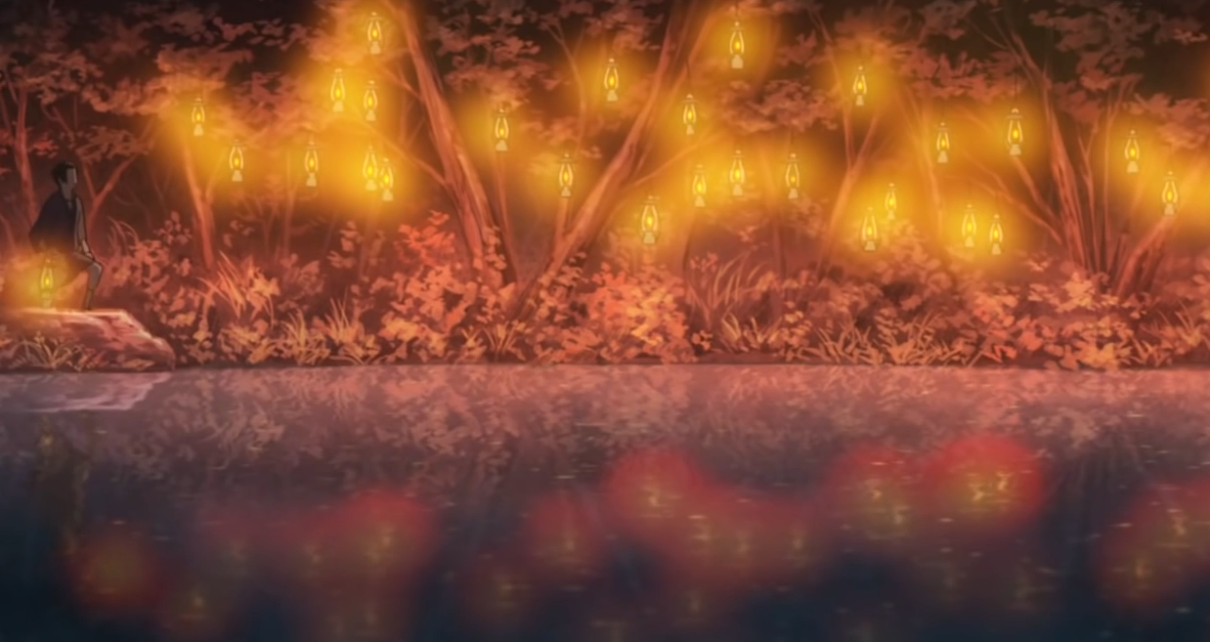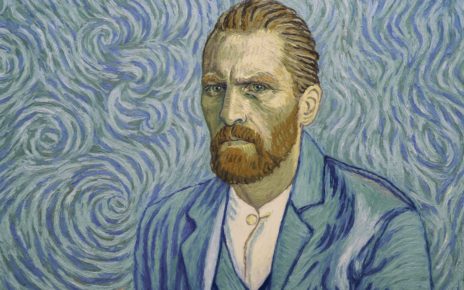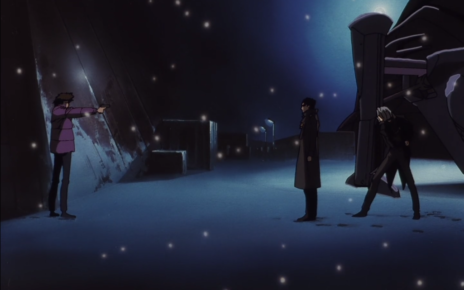“Lampu!” The cry rings out over rice paddies and wheat fields, echoed by a the retainer of children smiling in his wake. Once a homeless orphan, dependent upon the town chief’s kindness for the roof of a barn over his head at night and forced to run errands and perform odd tasks about the village he called home in order to eke out a living, Minosuke, now a young man, is a lamp salesman. One of the first in his part of the country, he travels with his cart and family, selling oil lamps in a westernizing Japan eager for the ease of a life enhanced by the latest technologies coming from across the sea. But technological advancement, once indulged, cannot help but continue at a breakneck pace. Some day, even the prescient and savvy will wake to find their trades no more.
The beauty and terror of technology and the blessings and curses of westernization are both central to Teiichi Takiguchi’s “Ojisan no Lamp,” a stunning 25-minute amateur animated film. The piece was released in 2010 as part of the inaugural round of the Young Animators Training Project, an annual program launched by the Japanese Animation Creators Association and supported by the Japanese government’s Agency for Cultural Affairs dedicated to encouraging the training of budding animators.
“Ojisan no Lamp” may be the work of an amateur rather than professional animator, but it’s nearly impossible to tell. The scenes are gorgeously animated, with a stunning focus on the colors and depths of light produced by varied sources—the sun on bright days and gloomy days, through slats of wood and at twilight; oil lamps large and small, in the home and out of doors; and, finally, electric light—and a patience that somehow seems to extend the film’s short runtime. The story is simply but powerfully told, a meditation on accepting the passing of time and the ease with which one’s trade becomes irrelevant in a rapidly changing society—a lesson much needed during a time of working class anger and knee-jerk attempts to save dying industries, many of which, like coal and oil, actively destroy the planet they’ve so long powered along.

Minosuke shows anger, too—and doubt, and resentment, and a furious need to stop the passing of time and the changing of the world, the only way he can think of saving his business, his family, himself. He lies to his fellows about the benefits of electricity. He goes near mad with fear of the future. He rages against the dying of the oil lamp’s light—until, finally, he is the one who must snuff it out in a tragically symbolic rejection of the past. And yet, years later, he is a grandfather with a standing oil lamp buried in the back of his home, a relic he must explain to his grandson, who has never seen one before. Wistful for the past but having found a way to adapt to the present, Minosuke endures. In a review on The Nihon Review, one blogger writes:
We relate to his reluctance to give up everything he’s loved and accept his own irrelevance. Yet, we implore him to do so, lest he be left behind by the ruthless progress of society. Though everything ultimately ends well for him, we’re still left with a tinge of sadness at the end of it all — unwilling to accept, like Minosuke, than object as beautiful as an oil lamp can be so casually replaced by something as harsh and uninviting as a light bulb, yet knowing, as he does, that such is life — that one must either keep up with the times, or be left behind in the dark.
It’s stunning stuff. And, as modern technology continues its sprint toward the future, with teleportation and genetic editing both now real possibilities, “Ojisan no Lamp” may just serve the purpose intended of its namesake: providing a steady warmth to light the way through an ever-coming dark.
Thanks for reading The Dot and Line, where we talk about animation of all kinds. Don’t forget to ❤ this article and follow us on Twitter and Facebook.





